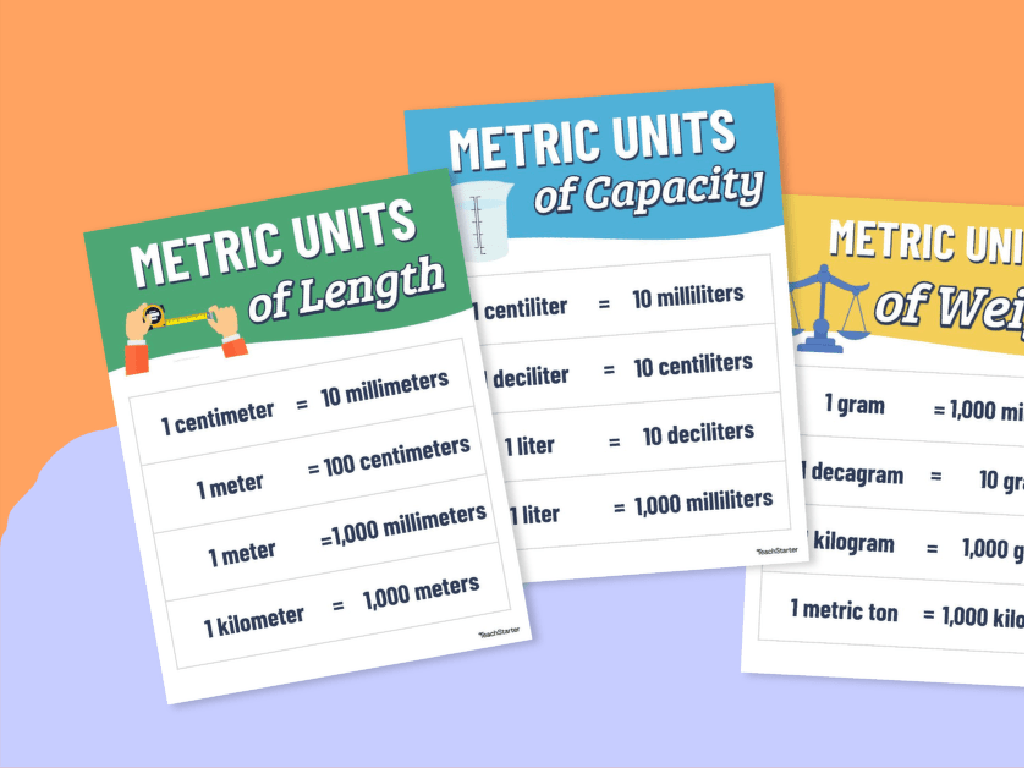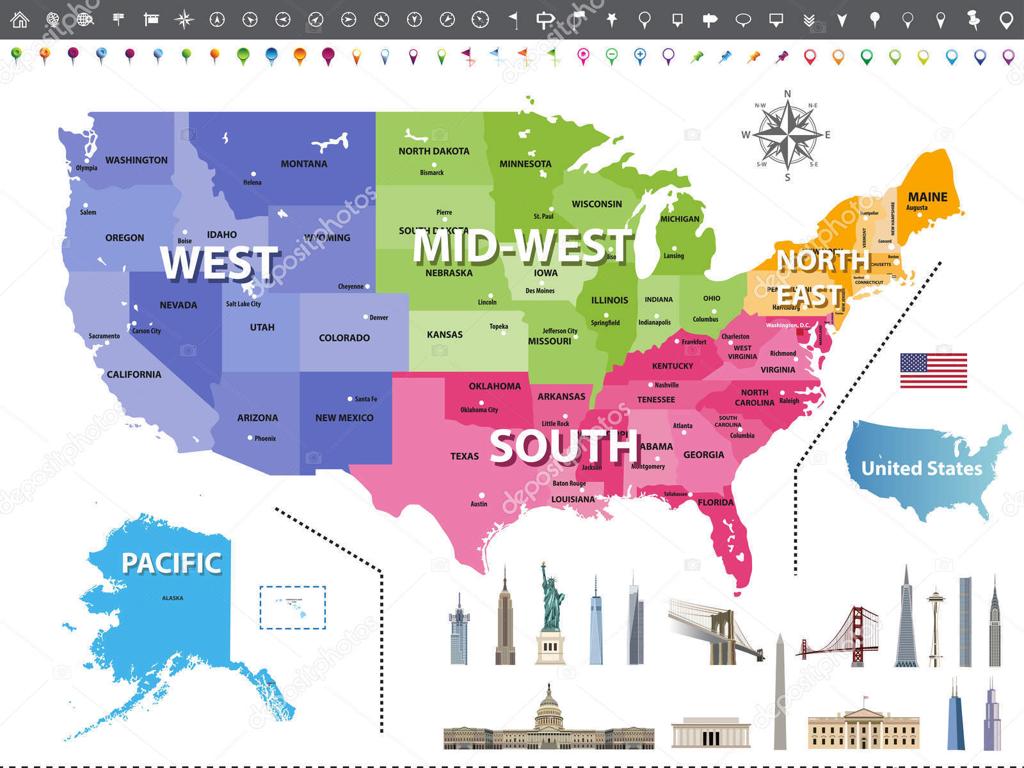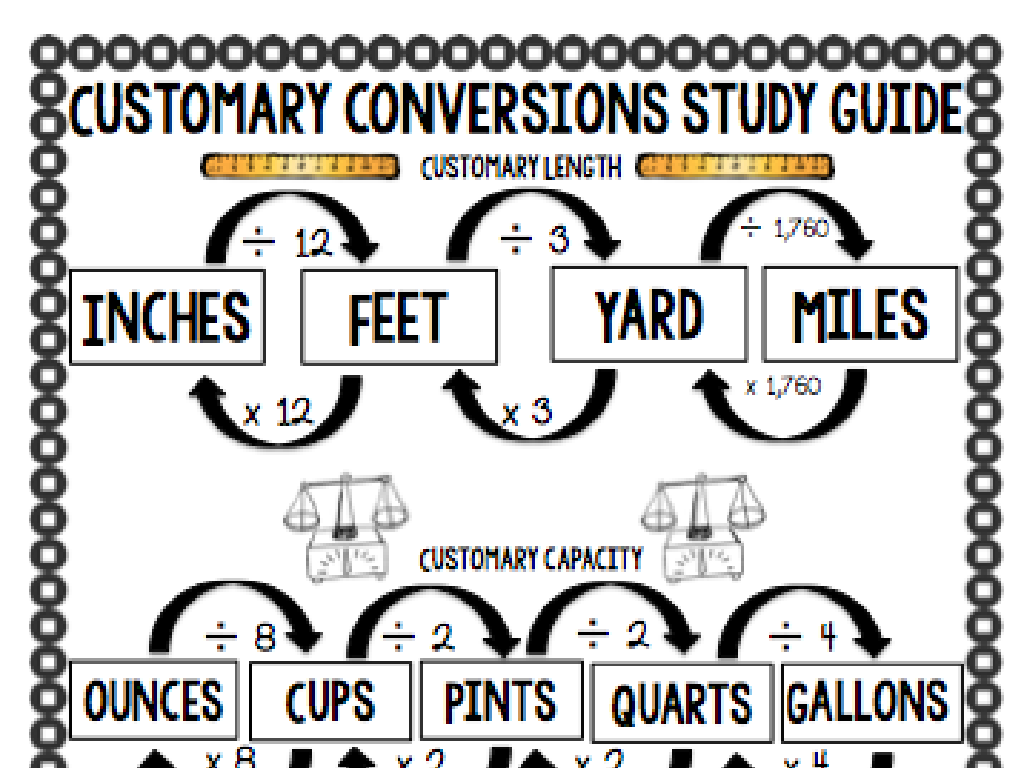Adjust Quotients
Subject: Math
Grade: Fifth grade
Topic: Division
Please LOG IN to download the presentation. Access is available to registered users only.
View More Content
Today’s Adventure: Adjusting Quotients!
– Explore division’s role in math
– Recap: Defining a quotient
– A quotient is the result of division
– How to adjust quotients
– Adjusting means finding the closest whole number
– Practice with examples
– We’ll use example problems to learn adjusting
|
This slide introduces the concept of adjusting quotients within the broader topic of division. Begin by discussing the role of division in math, emphasizing its importance in various applications. Recap the definition of a quotient as the result of dividing one number by another. Explain that adjusting quotients involves rounding the result to the nearest whole number, which is a useful skill in estimating and simplifying answers. Provide practice problems to help students apply this concept, ensuring they understand how to adjust quotients both up and down depending on the context. Encourage students to think about why it might be useful to adjust quotients in real-life scenarios, such as when sharing items equally among a group.
Understanding Quotients in Division
– Quotient: division result
– Example: 20 ÷ 4 equals 5
– In 20 ÷ 4 = 5, 5 is the quotient
– Quotients as whole numbers
– When dividing evenly, quotient is whole
– Quotients can be fractions
– Uneven division results in fractional quotients
|
This slide introduces the concept of quotients to fifth-grade students. Begin by defining a quotient as the result of a division problem. Use simple examples like 20 divided by 4 to illustrate a quotient that is a whole number. Explain that when numbers divide evenly, the quotient is a whole number. However, when division is not even, the quotient can be a fraction or a decimal. For instance, 3 divided by 2 does not result in a whole number, so the quotient is 1.5 or 1 1/2. Encourage students to think of quotients in terms of ‘how many times one number fits into another’ and to practice with both types of division to become comfortable with the concept.
Why Adjust Quotients?
– Division may not always be even
– Adjust to find the nearest whole number
– If 25 cookies are shared among 4 kids, how many does each get?
– Real-life example: sharing with friends
– Imagine splitting a pizza among 3 friends equally
– Understanding remainders is key
– Remainders tell us if something is left over after sharing
|
This slide introduces the concept of adjusting quotients, which is necessary when a division problem does not result in a whole number. It’s important for students to understand that not all division problems will divide evenly and that adjusting the quotient helps us find the closest whole number answer. For example, when sharing 25 cookies among 4 friends, we can’t give each friend 6.25 cookies, so we adjust to give each friend 6 cookies and have one left over. This concept is applicable in many real-life situations where equal sharing is required. The remainder is the part that is left over after the division, and understanding this will help students in solving real-world problems.
Estimating Quotients in Division
– Estimation predicts quotients
– Estimation gives a close idea of what the answer will be.
– Round numbers for easier math
– Make the divisor or dividend a round number to simplify.
– Example: 453 ÷ 9 H 450 ÷ 9
– By rounding 453 to 450, division becomes simpler: 450 ÷ 9 = 50.
|
This slide introduces the concept of estimating quotients to make division problems easier to solve mentally. Emphasize the importance of estimation as a tool for checking the reasonableness of answers. Show students how to round the divisor or dividend to the nearest ten or hundred to simplify the calculation. Use the example provided to demonstrate the process step by step. Explain that while the estimate is not the exact answer, it helps us quickly predict the range in which the actual quotient lies. Encourage students to practice with additional examples and to always verify their final answers with estimation.
Adjusting Quotients in Division
– Rounding up with large remainders
– If remainder is more than half of divisor, round up
– Keeping same quotient with small remainders
– If remainder is less than half, keep the quotient
– Example: 32 ÷ 6
– 32 ÷ 6 gives 5 with a remainder of 2
– Deciding to adjust to 5 or 6
– Is 2 a large remainder here? Should we round up?
|
This slide introduces the concept of adjusting quotients based on the size of the remainder. When dividing, if the remainder is large (more than half of the divisor), it often makes sense to round the quotient up to the next whole number. Conversely, if the remainder is small (less than half of the divisor), the quotient typically remains the same. For example, when dividing 32 by 6, we get 5 with a remainder of 2. Since 2 is one-third of 6, it’s considered a small remainder, and we would keep the quotient as 5. However, encourage students to think critically about when it might be appropriate to adjust the quotient up or down. This concept is particularly useful in real-world applications where exact division is not always possible or practical.
Adjusting Quotients: Practice Time
– Let’s solve 247 ÷ 5 together
– Estimate the quotient first
– Round the numbers to make it easier
– Work in pairs to adjust the quotient
– Use estimation to find a close answer, then refine it
– Share your answers with the class
|
This slide is designed for an interactive class activity where students will practice the concept of adjusting quotients. Start by solving the problem 247 ÷ 5 as a class to demonstrate the process. Encourage students to estimate the quotient first by rounding the divisor or dividend to the nearest ten or hundred to make mental calculation easier. Then, have them work in pairs to adjust their estimate to find a more accurate quotient. Afterward, ask some pairs to share their answers and the strategies they used to adjust their quotients with the class. This will help students understand the concept of division as an estimation process before refining their answer. Provide guidance and support as needed during the activity.
Class Activity: Quotient Adjustment Game
– Form small groups for the game
– Receive a set of division problems
– Race to estimate and divide
– Estimate the answer before dividing
– Adjust quotients accurately
– If the estimate is off, adjust to find the correct quotient
|
This interactive class activity is designed to help students practice estimating and adjusting quotients through a fun and engaging game. Divide the class into small groups, ensuring each group has a mix of abilities so students can help each other. Provide each group with a set of division problems tailored to their skill level. The race element of the game adds excitement and encourages quick thinking, while the requirement to adjust quotients ensures accuracy. As students work, circulate to offer guidance and ensure fair play. Possible variations of the activity could include using different sets of numbers, incorporating word problems, or having students create their own division problems for others to solve. The goal is to build confidence and proficiency in division with a focus on the process of estimating and adjusting to find the correct answers.
Conclusion: The Value of Adjusting Quotients
– Understanding quotient adjustment
– It helps in estimating and checking division accuracy.
– Applying skills to everyday life
– Useful in budgeting, sharing, and planning events.
– Preparing for advanced division
– Tomorrow, we’ll tackle larger numbers and longer division.
– Reflect on today’s lesson
– Think about how adjusting quotients helped solve problems today.
|
Adjusting quotients is a critical skill that aids in the estimation and verification of division problems. It’s particularly useful in real-life scenarios such as dividing expenses, sharing resources equally, or planning events where quick mental calculations are needed. As students prepare for the next lesson, they should reflect on the importance of this skill and how it will apply to dividing larger numbers. Encourage them to think about how they used quotient adjustment in class and how it made solving division problems easier. This reflection will help solidify their understanding and prepare them for more complex division tasks.






